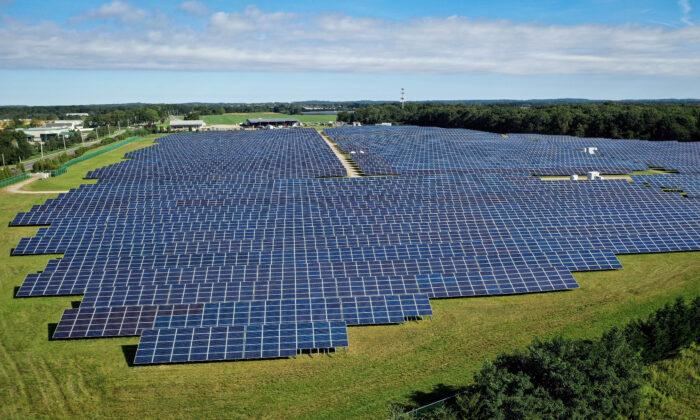A recent report by the Brookings Institution claims that “the American public overwhelmingly favors renewable power.” While this may be true in theory, when Americans experience the reality of it, they don’t seem to like it much at all.
“Most wind turbines being installed in the United States today are the height of a 35-story building,” the report reads. “The expanding land needs of a renewable energy system raise concerns about ‘energy sprawl.’”
Extensive networks of power lines must be constructed to transmit between the remote areas where wind and solar are located and the cities that use their power. Fossil fuels are mobile and those plants, as with nuclear plants, can be located close to end users. Wind and solar, for the most part, can’t.
Renewable Rejection Is on the Rise
Author and energy expert Robert Bryce has been tracking just how unpopular renewable power is in his Renewable Rejection Database, collecting data from sources such as local news reports. He has observed an escalation in local community “rejections” over the past decade, increasing from virtually none from 2011 to 2014 to more than 450 cases in the almost 10 years since.
“I’m interested in what’s happening in rural America and how local communities are reacting to the encroachment of these wind and solar projects,” Bryce told The Epoch Times. “From Maine to Hawaii, the bottom line is local people care about what happens in their neighborhoods everywhere, and they are concerned about their views and their property values and rightly concerned about their health and the noise that comes from these wind projects.”

Many Americans feel that what President Joe Biden calls the “incredible transition” to renewables from fossil fuels has been imposed on them by government fiat and corporate net-zero cabals, but Bryce said local democracy is giving people a voice.
“Americans very broadly are having a say, based on the very fundamental issue of property rights and land use,” he said.
The Brookings report states: “An energy system based on renewables will have a different shape than the fossil fuel-based system Americans are accustomed to. Production facilities will cover more land in areas that are not accustomed to energy infrastructure. Trillions of dollars of infrastructure will be needed to achieve a renewable power system, for construction of generation and transmission capacity.”
The Environmental Cost of Mining
In addition to the “energy sprawl” once the systems are built, there’s also the issue of the exploitation of wide tracts of land and habitats for the mining of minerals that are needed for batteries, wind turbines, solar panels, and transmission lines. They include cobalt, lithium, copper, nickel, and other minerals that must be extracted from the earth, creating toxic waste, pollution that has turned rivers red, and extensive carbon dioxide emissions.This was soon contradicted by his administration’s efforts to block domestic mining, most recently in an Environmental Protection Agency (EPA) decision on Jan. 31 to block the Pebble Mine project near Alaska’s Bristol Bay. Americans appear to want the mining of renewables to be done abroad.
Pebble Project CEO Disagrees
“The EPA decision to try to destroy the Pebble opportunity is just one more piece of the Biden administration’s war on domestic natural resource development,” said John Shively, CEO of The Pebble Partnership, the company that would control the mine. “The Biden strategy, when it comes to securing the minerals required for its green energy goals seems to be to give some passing support for the development of boutique minerals such as lithium and rare earths in the United States but to seek the enormous supply of base metals such as copper needed for EVs, solar panels, wind turbines, hydroelectric plants, and the associated infrastructure from other nations.”“The Democratic Republic of the Congo and People’s Republic of China were responsible for some 70 percent and 60 percent of global production of cobalt and rare earth elements respectively in 2019,” the report reads.
In terms of the refining of these minerals, China is even more dominant. Its global market share is 35 percent for nickel, 50 to 70 percent for lithium and cobalt, and 90 percent for rare earth elements.





